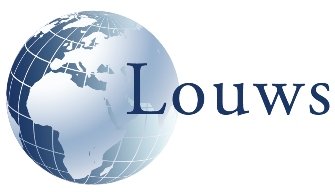Brilliant Strategic Thinking
What it takes for people to say “he’s a brilliant strategist”
The word “strategy” is derived from the Greek words “strategos”; stratus (meaning army) and “ago” (meaning leading/moving).
How to achieve and implement Strategy has been the center of many conversations we’ve had with 1,000’s of brand groups, marketing teams, CEO’s and their boards.
Confusion over what strategy actually is, seems to be the one thing they easily agree on.
Its purpose or how it looks when documented seems to be in constant question.
When asked to define strategy, we get as many definitions as there are people in attendance, the most common, defined as a tactic.
It’s no wonder the level of strategic thinking has taken such a precipitous decline over the past few decades. Not my words, but those of marketers who hire marketing firms to provide strategic solutions.
According to MSG (Management Study Guide) the definition of strategy is:
“an action that managers take to attain one or more of the organization’s goals.”
It points to a strategy focused on achieving an outcome. Correct!
Then notice it says it’s an action – Incorrect!
That’s a tactic.
Tactic defined: “an action or method that is planned and used to achieve a particular goal.” The Britannica Dictionary.
Let’s take another moment and dig deeper.
The dictionary that first pops up in Google is - Excerpts from Oxford Languages. (no surprise - owned by Google)
“a plan of action or policy designed to achieve a major or overall aim.”
Again, we see there is an outcome to be achieved and, in this definition, it’s a Plan or Policy that’s to achieve the outcome.
But this definition, as with the MSG’s definition, is only 50% correct.
What’s the other 50%?
Clarity on what kind of plan, for it to be considered strategic.
After all, the words strategy and plan are different in meaning, as are strategy and tactic.
Case in point: You could have a strategic plan or a tactical plan. Again, very different.
So please, don’t fall for the “a tactic and strategy are synonymous.” They are definitively not.
Here is a definition from a vastly more accurate and trusted source Merriam-Webster who, at this writing, has been a source record of the English language since 1828, 195 years longer than Google. It gives that elusive insight into what that other 50% definition of what strategy is and likewise, what’s typically missing from contemporary attempts at defining and creating strategy.
“a careful plan or method: a clever stratagem”
And so you see what kind of plan earns the right to be called strategic. - careful and clever!
Adding the word strategy before the word plan does not make it strategic, but unfortunately it is seen to be a common process employed by many in business today.
In other words, calling something strategic doesn’t make it so.
Showing how careful and clever a plan is would then, and only then, allow the plan to warrant the moniker; Strategic.
In the case of Troy and the use of the Trojan horse - the strategy can simply be defined as “deception” where the action was building the horse and putting men inside
In the marketing world, this is what clients are looking for.
“I just cannot put my finger on it”, or “I’ll know it when I see it” are typical responses when one is not convinced of the smarts of a strategy.
What do you need to know to be strategic?
There is a vast difference in what a boxer vs. marketing team vs. chess player vs. race car driver at the Indy 500 needs to know in strategizing on how to accomplish their objectives.
Fortunately, there are generic commonalities specific to the sales and marketing business that once known allow for strategic thinking and solutions. These are some of the most common one would use in “evaluating for the purposes of arriving at strategy”.
Who’s the competition and what will they do in response?
Their strengths and weaknesses and how they have hidden these weaknesses.
Their game plan with you and others as their adversary.
The strengths and weaknesses of the product and/or service you represent and how these might be exploited by the competition and you.
What has previously been done?
Brand and product advertising and marketing tend to prey upon each other’s ideas which is why you often see category advertising looking so similar.
What does the audience want?
Consumer strategies based on the buying audiences’ motivations to purchase and propensity to the brand/product vs. that of competing brands/products, and less upon the manufacturers’ wishes for brand and product emphasis.
Where is the audience to be found?
This has everything to do with channel distribution and the life and lifestyle habits of the customer being pursued.
Marketers are usually very good at understanding a typical “day in the life” of their customers and how to reach them.
However, we have noticed a common disconnect with this known data and the marketing and advertising communications strategies.
Who owns what and how much is available?
Product distribution strategies are often linked to a company’s capabilities.
Therefore, this should be thoroughly investigated for both the brand being marketed and its direct competition.
There are many more things you can and should explore, but these are good starting points in arriving at an effective communications or marketing strategy.
Using history as a guiding light, one sees the most shrewd conquerors of nations have understood the power of information as still being manifested in the 21st Century.
The Last word
The more you know, the more brilliant will your strategies be.
When conserving a marketing strategy, at a minimum know 3 things:
1) What has worked and not worked?
2) What motivates the recipient of one’s strategy to action?
3) How will the competition respond?
Next Month: Part 1 of a 4 part series on Leadership.



